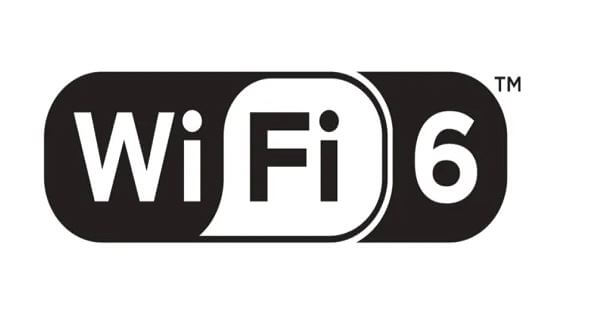The 3 Most Important Facts about Wi-Fi 6

The Wi-Fi Alliance has confirmed that Wi-Fi 6 devices will be able to connect to legacy access points that support the standard. However, Wi-Fi 6 equipment is not yet available from all Wi-Fi 6-compatible device makers. In this article, we’ll cover the three most important facts about Wi-Fi 6, including whether the standard is backwards compatible, its maximum theoretical throughput, and what it means for you if your router supports the standard.
What is Wi-Fi 6?
Wi-Fi 6 is the next-generation standard for wireless networking. It’s a technical update to the Wi-Fi standard, which has been around since 1999. Wi-Fi 6 is backward compatible with all existing Wi-Fi networks. Wi-Fi 5 devices (which are still in use) can connect to a Wi-Fi 6 access point, and vice versa.
As of late 2018, the Wi-Fi Alliance has confirmed that Wi-Fi 6 devices will be able to connect to legacy access points that support the standard. However, Wi-Fi 6 equipment is not yet available from all Wi-Fi 6-compatible device makers. In this article, we’ll cover the three most important facts about Wi-Fi 6, including whether the standard is backwards compatible, its maximum theoretical throughput, and what it means for you if your router supports the standard.
Is Wi-Fi 6 backwards compatible?
Yes, Wi-Fi 6 is backward compatible with all existing Wi-Fi networks. This means that once you’ve upgraded your Wi-Fi router or access point to support the new standard, you can simply switch the devices in your home from a Wi-Fi 5 device to a Wi-Fi 6 device without changing the network’s configuration or reconnecting devices.
According to the Wi-Fi Alliance, the vast majority of home routers and access points already support Wi-Fi 6. However, some older routers and devices may not yet support the standard. If you’re in one of these categories, it’s important to understand that you won’t be able to take advantage of the increased Wi-Fi speed and range that Wi-Fi 6 provides.
How fast can a Wi-Fi 6 device transfer data?
Theoretically, a Wi-Fi 6 device can transfer data at a maximum speed of 1.2 gigabits per second (Gbps). That’s up to 100 times faster than the best Wi-Fi router available today.
However, keep in mind that the Wi-Fi 6 standard is still in the process of being finalised. As we’ve discussed, not all routers and access points will support the new standard when it becomes available. So you may not be able to take full advantage of the increased speed.
What devices are compatible with Wi-Fi 6?
The first wave of Wi-Fi 6-compatible devices is expected to launch in the first half of 2019. These will include routers, mobile devices, and cloud services.
Most mobile devices that currently support 802.11ac will be able to take advantage of the increased speed and range that Wi-Fi 6 provides. However, it’s worth noting that not all devices will support the new standard. Some older devices may not be able to switch over to the new standard, and some devices may not be able to support the increased speed.
The first wave of Wi-Fi 6-compatible devices is expected to launch in the first half of 2019. These will include routers, mobile devices, and cloud services.
Final Words: Is Wi-Fi 6 worth upgrading to?
In short, it depends. It’s important to understand that as of late 2018, Wi-Fi 6 is still an experimental specification. So it’s possible that Wi-Fi 6 won’t be fully functional or widely available by the time you have to upgrade your router. If, for some reason, you have to replace your current router and Wi-Fi 6 isn’t an option, you can still keep your wireless network running on the older Wi-Fi standard. However, it’s best to plan ahead and update your router to support the latest standard. In many cases, a Wi-Fi 6 upgrade is completely free. So it’s worth doing what you can to take advantage of the increased speed and range that Wi-Fi 6 provides.
Latest network
-
17 Marnetwork
-
16 Decnetwork
ASUS ZenWiFi BT10
-
24 Maynetwork
ASUS ROG Rapture GT-BE98
-
16 Maynetwork
Intel opens for PC connection via Thunderbolt
-
22 Marnetwork
Ultra Ethernet Consortium expands to 55 members
-
26 Jannetwork
MSI WiFi 6E USB-adapter
-
16 Decnetwork
Wi-Fi 7 soon ready for rollout
-
23 Junnetwork
ASUS RT-AX59U
Most read network
Latest network
-
17 Marnetwork
Netgear Nighthawk M3
-
16 Decnetwork
ASUS ZenWiFi BT10
-
24 Maynetwork
ASUS ROG Rapture GT-BE98
-
16 Maynetwork
Intel opens for PC connection via Thunderbolt
-
22 Marnetwork
Ultra Ethernet Consortium expands to 55 members
-
26 Jannetwork
MSI WiFi 6E USB-adapter
-
16 Decnetwork
Wi-Fi 7 soon ready for rollout
-
23 Junnetwork
ASUS RT-AX59U






